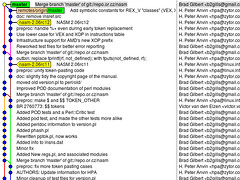I know there are several estimating questions here, and I have read through most of them, but this one is slightly different. If you're doing a refresh on a Web site, it might include usability enhancements that increase the hours for page production and development. We'll never look at a Web site and say to ourselves the way it is now is the way it will be in the future. If that were the case, then our clients wouldn't be looking for our expertise. Should it always be a requirement to do a team brainstorm before responding to an RFP or creating a formal statement of work? What if those doing the brainstorming are not doing the final work? We can only inventory the current site to a certain extent, and I'm starting to think we should make estimates only for what we know, letting the potential client tell us where we're missing certain elements.
-
When you don't know what your estimating, expect the estimation to be inaccurate (and, at best, approximate).
State your assumptions ("X if we do Foo or Y if we don't").
State what you would need to reduce uncertainty ("we need to spend an hour with the client to gather requirements before we can provide any estimate").
-
In your proposal, be fairly specific about what you saw on the current web site (how many pages/resources? are they low/med/high complex? What are the high level features you see already existing (i.e. search, security, AJAX, profiles, etc.) and what would you consider adding? Give ranges, rather than specific estimates.
The more detail you give about what you saw without knowing the requirements will help the client believe you didn't just shoot the proposal through an RFP chute, and that you're serious about the work, without tying you to a commitment to deliver more/faster than you can. Clients do understand that you can't really make a reliable estimate, but the more they believe you have made a serious attempt, the more they're likely to commit their time to helping you understand the requirements towards making a final proposal and SOW.
